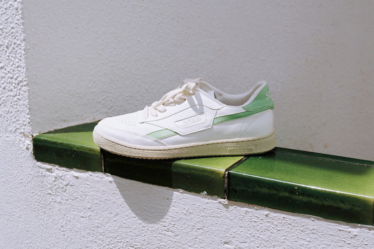When Benji Park started posting on TikTok in 2019, he says he was one of few people on the app talking about fashion.
“I did one about Alexander McQueen that got like seven million views and everyone was like, ‘Who’s this person?’” said Park. “I was like, ‘it’s Alexander McQueen.’”
Now, Park’s page, “fashionboy” — which features videos on topics like Phoebe Philo’s comeback, Virgil Abloh’s impact and Balenciaga’s return to couture — has almost 204,000 followers. He’s part of a growing cast of self-declared fashion critics on TikTok, who are driving conversation with 60-second show reviews, fashion history lessons and trend predictions.
Like the fashion bloggers and YouTube vloggers before them, these TikTok fashion critics occupy a role somewhere between influencer and journalist — and have quickly elbowed their way into the fashion industry’s inner circle. In the past year, TikTok critics have attended fashion weeks, written for publications like Elle, i-D and The Face, and been profiled in Vogue, Paper and Dazed.
They’ve proliferated a new type of story: “Someone on TikTok said this,” perhaps best evidenced by coverage of “oldloserinbrooklyn” Mandy Lee’s prediction that the “Indie Sleaze,” early 2000s hipster aesthetic would return. Outlets like Dazed, i-D, GQ, Vox, British Vogue, Esquire and Nylon covered the term, many referencing her video.
“Even if media companies had the idea before me and were to write about it, I don’t think it would have the same weight as it does on TikTok — which is super weird to think about because 10 to 15 years ago, my bibles used to be magazines,” said Lee, who wields 314,400 followers.
The rise of these figures comes as TikTok is playing a larger role within the fashion industry. The app has not only proven its record when it comes to generating product buzz and driving sales, but it’s also essentially become a weather vane for Gen-Z’s attention and interests. By bringing the discourse on fashion to a new, younger, more mainstream audience, the TikTokers are driving a “democratisation of criticism,” said Francesca Granata, professor of fashion theory at Parsons and author of “An Anthology of Fashion Criticism.”
“All of the sudden there’s room for everyone to have a much more vocal opinion, rather than the five big journalists in the industry controlling everything,” said Alexandra Hildreth, who has posted as “guyfierisuperfan” since early 2021, and has nearly 60,000 followers.
The Medium and the Message
TikTok critics like Hildreth, Lee and Park bill themselves as outsiders with a mission to educate their followers — and anyone else who might stumble upon their videos — about fashion. They mainly rely on images and videos posted by brands, or on Vogue Runway, and view their lack of access as an advantage — it allows them to be more candid in their analysis and cutting in calling out problems embedded in the industry. They see themselves as cracking open fashion.
“[People] are afraid of not having all the references. But the thing is, you will never know everything. No one can possibly — Miss Anna Wintour doesn’t know everything,” said Lee.
“Relaxitsonlyfashion’s” Timothy Chernyaev, a stylist and Condé Nast veteran, who has 182,400 followers, has become a go-to source for runway images. His collection reviews feature around five looks, with an accompanying quick quip about each, imagining his average viewer as a high school student or a first-time fashion intern.
“I don’t want people to feel discouraged … Am I making visits entertaining? Is it educational? Is it fun?” said Chernyaev, who adds he’s seen niche references and historical allusions wielded as gatekeeping devices against young people.
TikTok combines the traits of a place like Tumblr — where anyone can go viral — with mainstream cultural relevance, according to Rebecca Jennings, internet and culture reporter at Vox. The app forefronts conversation — users “stitch” or “duet” each other’s videos, and creators reply to comments. So, others are apt to join in. Alyssa Moseley, “cherrymojitoxo” did just that after watching Lee and Hildreth.
“I remember seeing their videos and being like ‘I have something to say, I want to contribute to this conversation.’” said Moseley. “I never saw a creator who talked about fashion analytically speak about the work Black designers have contributed to the foundation of fashion.”
She’s done videos on topics like the importance of subcultures and the tension between being a “fashion tourist versus purist” in addition to showcasing emerging Black designers and doing personal style videos. She now has about 24,000 followers.
Because of time limits, some creators use TikTok as a jumping-off point. Both Lee and Hildreth, for example, expand their TikTok theses on Substack.
But Clara Perlmutter, who studied cultural criticism and creative writing at NYU and posts on TikTok as “tinyjewishgirl,” says the ability to communicate ideas in short, entertaining ways, is an undervalued skill that is especially relevant to Gen-Z. TikTok critics shouldn’t be written off because of the quirks of their chosen medium. She distils her process of putting together unconventional outfits for her nearly 800,000 followers.
“We live in a day and age where media needs to be shareable and easily consumed,” she said. “If you’re able to communicate criticism in a way everyone can consume it, that’s important.”
Fashion’s Young Future
In part because of the way TikTok’s algorithm works — serving content to people who may not have sought it out on their own — TikTok criticism is getting new audiences interested in, or at least intrigued by, fashion.
“It’s bringing more people into these kinds of discussions … making this more accessible to people who didn’t necessarily think to look for it,” said Jennings.
That TikTok critics’ trend predictions have so quickly grabbed the attention of mainstream media and brands so quickly reflects the industry’s simmering paranoia that it doesn’t know what young people think is cool, said Jennings. Those fears aren’t entirely unfounded. If young people don’t like a brand’s values, decisions, or simply its “vibe,” they’ll move on — or worse, tear the brand apart on social media, said Chernyaev.
Park has worked with London Fashion Week and the British Fashion Council through TikTok, consulted Selfridges on its TikTok launch, worked with Coach and partnered with Alexander McQueen on looks and a shoe launch. Perlmutter has a collaboration with Spanish shoe brand Miista in the works. Lee has worked with names like Tommy Hilfiger and Maisie Wilen on content. Moseley has started making TikTok content for Bricks Magazine and has been able to dip her toe in the world of styling.
“We can be more insightful into what a fashion brand needs to cater wholeheartedly to,” said Park, who adds sometimes designers don’t understand the uniquely Gen-Z native style and humour he deploys online.
As the TikTokers gain industry footing, they’ll inevitably lose the outsider status they built their platforms on. If brands and publications are willing to pay for their insight, the economics of being a forever fashion outsider don’t add up, said Granata. Becoming an insider isn’t necessarily a bad thing: It inevitably leads to more resources, access and audience. She predicts some of the TikTok critics will continue to move in and out of legacy publications. Being a full time writer is Hildreth’s goal.
Park said becoming an insider brings with it an obligation to people and organisations he previously didn’t have. He grapples with the power that comes with the platform.
“It’s just about just people enjoying it,” said Park. “That’s all I care about; people liking clothes.”



